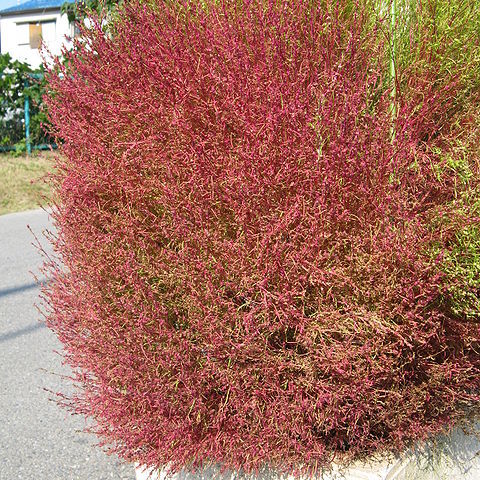Herbs annual, less often subshrubs, villous or pubescent, rarely glabrous. Stem erect or oblique, usually much branched. Leaves alternate, sessile or subsessile, terete, semiterete, or narrowly complanate, margin entire. Flowers axillary, sessile, usually 1-3-glomerulate, bisexual, sometimes some female, without bractlets. Perianth subglobose, 5-parted, herbaceous, usually hairy; segments incurved, abaxially with transverse, winglike, membranous, veined appendages in fruit. Disk absent. Stamens 5, inserted at base of perianth; filaments flattened; anthers broadly oblong, exserted. Ovary broadly ovoid; ovule subsessile; style obscure; stigmas 2 or 3, filiform, papillose. Utricle depressed globose; pericarp membranous, not adnate to seed. Seed horizontal, globose or ovoid, depressed, slightly emarginate near hilum; testa membranous, glabrous; embryo slender, annular; perisperm not copious.
Herbs often woody at base, or small shrubs. Lvs alternate, sessile or nearly so, narrow and sometimes almost terete, entire. Fls ☿ or ♀, sessile, solitary or few in fascicles; bracts and bracteoles 0. Perianth (4)-5-lobed, usually subglobose to urceolate in bud; segments incurved, becoming connivent and closing over the dry fr., each developing a transverse (horizontal) wing or tubercle, sometimes united to form a single wing surrounding fr. Stamens 5, exserted. Ovary sessile. Stigmas 2-3. Fr. (utricle) depressed-globose, invested by persistent perianth. Seed flattened, horizontal; embryo horseshoe-shaped.
Fls perfect or pistillate; cal minute, subglobose, 5-lobed; stamens 5, exsert; ovary depressed, styles 2–3, elongate, filiform; cal at maturity enclosing the fr, each sep bearing a horizontal wing; pericarp thin, free; seed horizontal, flat; embryo annular; annual or perennial herbs or shrubs with narrow lvs and small fls sessile in the axils of bracts, forming dense, axillary or terminal spikes. 30+, mainly Old World.

